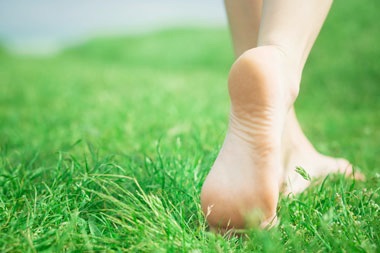Joburg Podiatrist: Ridwaan Essack
a highly trained specialists in the care of your foot and ankle.



Joburg Podiatrist: Ridwaan Essack
a highly trained specialists in the care of your foot and ankle.
Foot Health - Diabetes

Treating wounds and injuries
If you stub your toe, get a blister from tight shoes, or step on a sharp object, you probably give it little thought. But if you have diabetes you should seek proper treatment - no matter how small or superficial the wound is. Knowing how to treat minor wounds will help you avoid infection and speed healing.
Why diabetic wounds can cause problems
Diabetes is a chronic disease where your body can't use glucose, or sugar, the way it should. It can cause a number of complications, including some that make it harder for wounds to heal. These include:
•Nerve damage (neuropathy) - When you have neuropathy, you may not feel the pain of a cut or blister until it has grown worse or become infected.
•Weakened immune system - When the body's natural defences are down, even a minor wound may become infected.
•Narrow arteries - People with clogged arteries in their legs are more likely to develop wounds, have severe wound infections and have problems healing, as narrowed arteries make it harder for blood to get to the wound to heal it.
How to treat a diabetic wound
As even a minor wound can become infected if bacteria are allowed to build up after injury, take the following steps to avoid infection and promote healing:
•Clean the wound - Rinse the wound under running water to remove dirt. Do not use soap, hydrogen peroxide or iodine, as these can irritate the injury. Apply antibiotic ointment to prevent infection and cover the wound with a sterile bandage. Change the bandage daily and use soap to clean the skin around the wound. Inspect your wound daily for any signs of infection.
•See your doctor - Don't take any chances - have your doctor check minor skin problems or areas of redness before they turn into larger problems.
•Keep pressure off the wound as it heals - If your wound is on the bottom of your foot, a common place for diabetic people to develop calluses and blisters, stay off it as much as possible to give it a better chance to heal.
Foot wounds are dangerous
Feet and ankles are particularly vulnerable to diabetic wound problems. Wound healing below the knee is a different dynamic than in other parts of the body as these areas are prone to swelling which can inhibit healing.
As people with diabetes are more likely to have calluses, dry skin and nerve damage, it is more difficult for them to avoid foot wounds, which in turn can lead to an increased risk of ulcers and infection. Along with a loss of feeling in their feet, many diabetics also have vision problems, so they may neither feel nor see a small wound until it becomes severe.
A wound that becomes serious may do more than cause pain and inconvenience. It may cause so much damage to tissue and bone that amputation becomes the only option.
Research shows that an ulcer precedes most lower limb amputations in people with diabetes, which is why it's so important to care for a wound before it becomes serious - or, if at all possible, prevent wounds in the first place.
How to prevent wounds
The best way to avoid problems is to prevent them:
•Check your feet daily - Look for blisters, calluses, chafing, and redness. This is the single most important thing you can do to avoid diabetic foot problems. If you have trouble seeing, have someone else check your feet every day.
•Pay attention to your skin - Check for small, seemingly minor skin problems like infected hair follicles or inflamed areas around the fingernails. If you notice a problem, speak with your podiatrist.
•Moisturise your feet - Use moisturiser to keep the skin on your feet soft and supple, but don't use lotions between your toes because this can lead to a fungal infection. To treat athlete's foot, use a prescription cream antifungal product as they don't leave a moisture residue between the toes.
•Wear proper footwear - Wearing well-fitting shoes can help you avoid blisters. Closed toe shoes reduce the risk of foot injury, therefore it is advisable to even wear them around the house. If you have trouble finding shoes that fit properly, speak to your podiatrist as you may need a custom-made shoe.
•Inspect your shoes every day - People with diabetic neuropathy may walk around with a pebble or other object in their shoe without knowing it is there. You should also check for tears or rough areas on the inside of the shoe.
•Choose the right socks - Buy socks that wick moisture away from your skin and avoid socks with seams. Socks made specifically for people with diabetes are available in many specialty stores, online and from your podiatrist.
•Wash your feet daily - After washing, dry your feet carefully, including between your toes.
•Smooth away calluses - After your bath or shower, use an emery board or pumice stone to gradually remove calluses. Never cut calluses with scissors or a nail clipper.
•Keep toenails clipped and even - Ingrown toenails can lead to foot problems. Have your podiatrist or doctor check your feet regularly.
•Manage your diabetes - Preventing serious foot wounds also means keeping your diabetes under control. This includes monitoring blood sugar, blood pressure, and cholesterol levels; eating healthily; taking the medications your doctor prescribes; exercising regularly; not smoking; and having regular medical checkups.